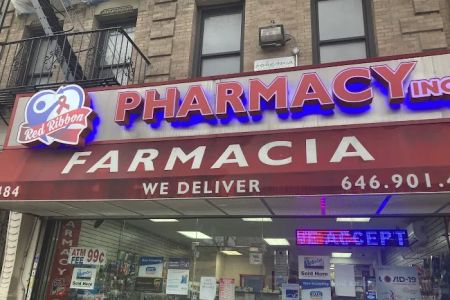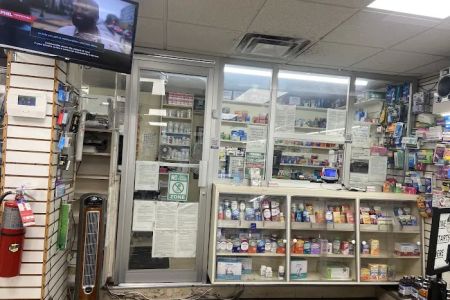How to Read and Understand Drug Recall Codes
When I first encountered a drug recall, I was immediately concerned about the safety of my medications. As it turns out, understanding drug recall codes can be a powerful tool for ensuring that I stay informed and safe. Drug recalls are issued by health authorities, manufacturers, or pharmacies when a medication poses a potential risk to health. However, many people, including myself at one point, don’t know how to read and interpret the recall codes. That’s why I decided to dive deep into understanding how these codes work. Let me take you through everything you need to know about reading and understanding drug recall codes, which could be essential for your health and safety.
1. What Are Drug Recall Codes?
Drug recall codes are identifiers used to communicate important information about a specific recall. These codes are generally issued by the Food and Drug Administration (FDA) or manufacturers and are important for tracking drugs that need to be removed from the market due to safety concerns. They may look like a series of numbers or letters, but they hold significant meaning regarding the recall process, the reason for the recall, and the type of action needed. Understanding these codes can help you determine whether a particular batch or lot of medication needs to be discarded or returned.
1.1 Types of Drug Recalls
Before diving into the specifics of reading the codes, it's essential to understand the different levels of recalls. The FDA categorizes recalls into three classes based on the severity of the issue:
- Class I Recall: This is the most serious type of recall, typically involving situations where the use of the drug can cause serious adverse health consequences or even death.
- Class II Recall: These involve situations where the drug may cause temporary or medically reversible health issues.
- Class III Recall: This is the least severe recall, usually involving drugs that are unlikely to cause any adverse health effects but may violate labeling or manufacturing laws.
2. Decoding the Drug Recall Code
Each drug recall is accompanied by a code that can be found on the FDA website, in press releases from the manufacturer, or through pharmacies. These codes may appear cryptic at first, but they can be broken down into key components that provide critical information.
2.1 Product Information
The recall code often includes the product's name, dosage, and the manufacturer's name. This helps you identify whether the medication you have is part of the recall. For instance, a code like “acetaminophen 500mg by XYZ Pharma” will tell you the specific drug involved. You can check the product label or packaging to compare this information with the code provided.
2.2 Lot Numbers and Expiry Dates
Lot numbers and expiration dates are essential parts of the recall code. Lot numbers are unique identifiers assigned to a batch of drugs produced at the same time. They help pinpoint exactly which units of the drug are involved in the recall. Expiry dates indicate when the medication is no longer safe or effective to use. If your drug’s lot number matches that listed in the recall notice, you should dispose of it immediately and consult your healthcare provider for an alternative.
3. How to Verify Drug Recall Codes
Once you’ve identified a recall code, the next step is to verify whether the medication in your possession is affected. Fortunately, there are several tools available for this process.
3.1 Using the FDA Website
The FDA's website is one of the most reliable sources for verifying drug recall codes. The site provides up-to-date information on recalls, including detailed product information and guidance on what to do if you're affected. Simply enter the drug’s name or lot number in the search bar to find specific recall information. The FDA also allows users to subscribe to recall notifications so that you’ll receive alerts if a product you use is recalled.
3.2 Checking with Your Pharmacist
If you're unsure about the recall status of your medication, don’t hesitate to ask your pharmacist. Pharmacists are often the first line of defense in preventing the use of recalled drugs. They can verify whether your medication is part of a recall and advise on how to proceed. They might also provide you with a replacement medication or guide you on how to dispose of the recalled product properly.
4. Taking Action After a Recall
If you find that your medication is part of a recall, it's important to take the appropriate action to avoid any health risks. The action you need to take will depend on the severity of the recall and the class of the product.
4.1 Returning or Disposing of the Drug
For most recalls, the manufacturer or the FDA will instruct consumers to return the product to the pharmacy or dispose of it properly. Returning the product is especially important for Class I and II recalls, where there is a risk of serious health issues. Dispose of any affected medications in a way that is safe for the environment, such as using a drug disposal service or following FDA guidelines for at-home disposal.
4.2 Seeking Alternatives
If your medication is recalled, you’ll need to talk to your healthcare provider to determine an alternative treatment plan. In some cases, your doctor might recommend a different brand or a different form of the same medication. Never attempt to self-medicate with another drug without consulting a healthcare professional.
5. Why Understanding Recall Codes is Important
Understanding drug recall codes is critical for your safety. I learned this firsthand after being involved in a recall that affected a medication I used. If I hadn’t known how to check the recall codes, I might have continued using a potentially harmful drug. The peace of mind that comes from knowing how to properly interpret recall codes empowers you to make informed decisions about your health and well-being.
5.1 Staying Proactive with Health and Safety
By staying informed about recalls and understanding how to interpret recall codes, you can protect yourself and your family from potential health risks. Make it a habit to regularly check your medications and be aware of any recent recalls. This proactive approach will keep you one step ahead and ensure that you're always making the safest choices for your health.














